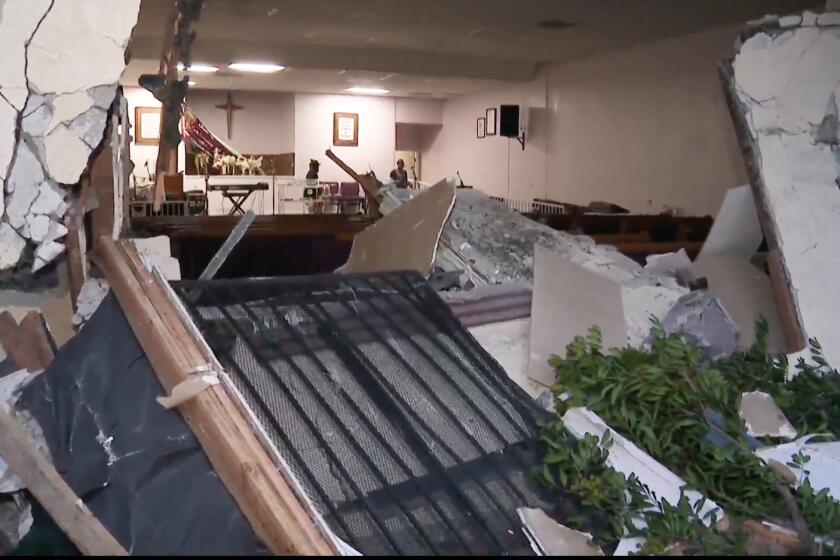Valley to Get Its Own Data Listings
The governor has signed a bill that requires the state to compile statistics for the San Fernando Valley separately from the rest of Los Angeles in an effort to help local leaders make better-informed decisions.
The law, sponsored by Assemblyman Lloyd Levine (D-Van Nuys), makes the Valley the state’s first separate non-city, non-county “statistical district,” and comes more than a year after the Valley’s failed effort to secede from Los Angeles.
Gov. Arnold Schwarzenegger signed the bill into law late Monday.
The bill easily passed through the Senate and Assembly earlier this month.
It had broad support from Los Angeles city and county political leaders, including Mayor James K. Hahn, as well as supporters and foes in the bitter secession campaign.
Levine said he believes the law will be a salve against wounds opened by the secession battle, while addressing concerns raised by those who argued the city’s vast bureaucracy frequently shortchanged the Valley.
“It is definitely a bridge,” Levine said of the legislation. “Everyone in the city came together, proving that despite the secession movement, we can all work together to provide for the Valley.”
The law requires state agencies, which formerly compiled statistics for Los Angeles as a whole, to break out separate data for the Valley. The city will also now provide the state with distinct information on the Valley.
Valley secession was defeated by 67% of the vote in November 2002. If secession had succeeded, the Valley, then with a population of 1.35 million, would have been the sixth-largest city in the country.
Levine, who opposed secession, said the law will allow the government, as well as other organizations, to make smarter and more targeted decisions regarding the Valley on such issues as planning, development, transit, advertising and the economy.
“In the future it should give us the ability to seek funding at the state and federal levels for projects on a more region-specific level,” Levine said. “It will also help the city allocate funds where they’re needed, and allow residents of the Valley to go petition the city and say, ‘This is what’s needed, and these are the facts to back it up.’ ”
Proponents and opponents of secession, however, do not agree entirely on all potential benefits of a Valley statistical district.
Some former supporters of secession have said collecting separate data would allow the Valley to seek its own federal grants to meet needs.
Secession opponents, including Levine, said the city’s clout in obtaining federal grants could be weakened if the Valley seeks grants on its own.
But on Tuesday, both sides expressed optimism about the law’s impact.
“This is a huge step,” said David Fleming, chairman for the board of the Economic Alliance of the San Fernando Valley.
“It’s good for the Valley and the whole city of Los Angeles, because information is knowledge and knowledge is power. It’s a win-win for everybody.”
For some, the law addressed other, less tangible needs.
“One of the things that came out of the secession movement was a greater sense of place. This further provides a sense of who we are, and how we think,” said Martin Cooper, chairman of the Valley Industry and Commerce Assn.
“Very quickly I think we’ll begin to hear people say, ‘The Valley feels differently about this or that.’ And we’ll have hard facts to back up these statements,” Cooper said.
More to Read
Start your day right
Sign up for Essential California for news, features and recommendations from the L.A. Times and beyond in your inbox six days a week.
You may occasionally receive promotional content from the Los Angeles Times.







